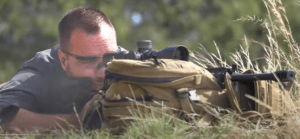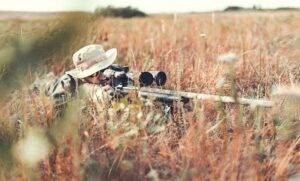
 If you own a firearm, one of the most important things you should know how to do is how to clean it.
If you own a firearm, one of the most important things you should know how to do is how to clean it.
This is not only to maintain the firearm and help it to last longer, but also to prevent mishaps, maintain accuracy, and instill discipline and responsibility in the owner. Should you own a firearm. It is important to be aware of how it works and to be responsible for your use of it.
To clean your firearm, here are a few basic steps to follow:
1. Before you start:
Before you even start with the actual cleaning of the firearm, there are a few things you should have in place. First, set up the workspace where you are going to be cleaning the firearm in a well-ventilated area to avoid becoming sick from fumes and other unwanted smells.
Think about throwing an old sheet over your workspace if you don’t want any smears or residue to end up on the table. Also, have all the materials ready, which you will be using to clean the firearm. A good cleaning kit includes a cleaning solvent, lubricant or gun oil, a bore brush, patch holder and patches, a cleaning rod, a nylon cleaning brush, a flashlight, cotton swabs, microfiber cloths for polishing, and a luster cloth. You can either put together a cleaning kit yourself or buy an already made one.
Second, unload and disassemble your weapon by taking out the magazine and ensure that there are no remaining rounds left in the barrel. Accidents can happen, and it’s best to be completely sure that your firearm is unloaded, should you accidentally drop it or push against the trigger – you don’t want to cause anyone injury or death! For disassembling, has a look at the owner’s manual to know how to take apart the firearm and up to where you should do so.
When all this is in place, you are finally able to go about with the cleaning.
2. Start with the cleaning rod and patches
Don’t start your cleaning routine by wiping down the whole firearm as this will be redundant and will only have to be done again at the end. Start with the barrel of the firearm. For the first step of cleaning your weapon, you will need the cleaning solvent, the cleaning rod, the patch holder and the patches. Try to use cotton patches if you can. Soak the cotton patches with the cleaning solvent, then using the cleaning rod, push the patch through the barrel to the other end. Never pull a patch back through the bore again as it will only undo all your hard work.
If you cannot work from the back of the bore (the interior of the barrel), use a muzzle guard that will protect the muzzle from the cleaning rod and prevents malfunctions.
3. Scrub the barrel
For this step, you will need all the materials from the previous step, as well as, the bore brush. Start by taking off the patch holder from the cleaning rod and, now attaching the bore brush. Here you are allowed to push back and forth (and not only one way) the bore brush, this is to loosen all the debris stubbornly stuck to the inside of the barrel. Do this a few times for the full length of the bore brush to maximize the outcome.
Then, once again attach the patch holder to the cleaning rod and repeat the previous step of running the cotton patches, soaked in cleaning solvent, through the barrel. Continue this back and forth of alternating between the bore brush and solvent-soaked patches until the patches come out clean. Finish this step by running a last, dry patch through the bore. This will dry the bore and allow you to see if there is any more debris you might have missed.
It is important to remove the build-up of carbon residue due (caused by gunpowder and other polluters), as this residue is what ultimately might lead to a malfunction that can even cause an explosion.
4. Lubrication
For the last step to do with the barrel and bore of the firearm, you will need the cotton swabs, the lubricant or gun oil, and, once again, the cleaning rod. Remove the patch holder from the cleaning rod and attach a cotton swab in its place.
Smear some of the lubricants to the cotton swab and run the swab, once, back and forth, through the bore. This will leave the bore with a light coating of the oil. A lubricant is important when it comes to the longevity and performance of your firearm.
5. The action
The next thing to do in cleaning your firearm is to clean and lubricate the action. For this step, you will need the nylon cleaning brush, the cleaning solvent, the lubricant or gun oil, one patch, and the microfiber cloth.
Use the gun brush, that was dipped in the cleaning solvent, to brush and clean the parts of the action. Then use the (clean) microfiber cloth to wipe it dry. Subsequent, drip a few drops of lubricant or gun oil on the patch and lightly coat the moving parts of the action. Don’t apply too heavy a coating as this will attract debris.
6. The rest of your firearm
The last step in cleaning your firearm only requires the luster cloth. A luster cloth is made from flannel and is pre-treated with a silicone lubricant and is not to be confused with the microfiber cloth.
For this step, you only need to wipe the luster cloth down the rest of your firearm to add shine and removes any debris (let out from previous steps and from the acid of your fingertips). Try to perhaps hold up the firearm with a cloth to prevent finger smears from appearing that will only undo all your hard work.
A gun cleaning kit is a vital part when it comes to maintaining your firearm, and it doesn’t matter if you buy one or put one together yourself. Make sure you clean your firearm regularly to avoid it malfunctioning or just not working when you want to use it.
If you own a firearm, whether it is a rifle for hunting or any other type of firearm, discipline and responsibility are very important. Although cleaning might seem like an unnecessary task, it plays a key role in whether or not the firearm is safe for use.









